When it comes to any form of creation, or decoration, or even fixing some broken furniture involving parts made of leather or wood, an appropriate fastener is indispensable, not to face future disappointment when everything falls apart. The two materials possess unique surface textures and characteristics, and it is a challenge to find any glue that could fix them both permanently and strongly. Although not limited to couches and decors with leather pieces, especially when it comes to pieces of furniture, it is always very important to know the appropriate stick glue that should be used as a craftsman and why. The article is a clear, guided explanation on the best glues you could use for fixing various items of leather to wood, the positive and negative features among the glues, and the circumstances that lead to their usage. At the end of the article, you will have been informed how to protect projects from disintegrating with time.
Introduction to Bonding Leather and Wood
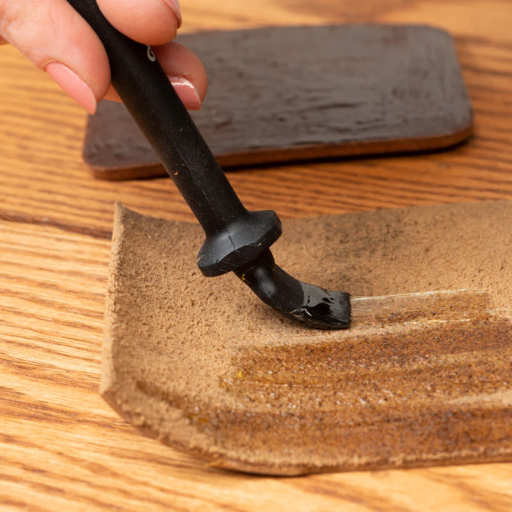
Bonding of leather to wood can only be achieved by using specialized adhesives tailored to address the special attributes of the supporting media, leather and wood. According to a number of experts, leather is considered to be a pliable and more porous material than wood, which varies in compactness and surface morphology. An appropriate bonding agent must be one that is strong, adheres, and does not blow apart materials when applied. The most appropriate ones include the following types of glues: contact adhesives, polyurethane, and epoxies. Contact cement is very economical where large areas and also contact between them need to bond quickly and robustly. Water-resistant purposes are best solved by the use of Polyurethane glue in this case, and epoxy glues best suit structural purposes. Also, cleaning and sanding down the working area before an application, especially if there is a wooden surface in question, will give a good condition for better adhesion to surfaces, saving time and effort.
The Challenges of Gluing Leather to Wood
The process of adhering leather to wood is not straightforward due to the nature of these two substances. Compared with wood, leather has the ability to expand and contract in the presence of temperature and moisture fluctuations, and is lightweight and porous. This dissimilarity causes bonding problems in the long term, particularly if the adhesive is not able to absorb motion between the substrate and the applied material. Furthermore, their increase in thickness can render adhesives inefficient for use within even strokes, as the leather is smooth and the material has a variety of thicknesses throughout. The presence of any imperfections on the wood surface must be removed to make it smoother, thus sanding it to improve gluing, and the leather surface must be roughened to roughen gluing skids, which are linings for easing the glue application. In addition, it is necessary to consider the right adhesive specific to different surfaces, as products such as contact cement and flexible epoxies are suggested, which are used to prevent delamination of different kinds of materials due to changes in the environment. Understanding all this and following the steps will help extend the durability of the joint.
Importance of Choosing the Right Glue
The aggressiveness of a bond largely relies on the type of glue used, and it is even more so in the extreme cases, which are driven by safety and performance. However, new compositions for adhesives have been developed for particular purposes, including resistance to high temperatures, flexibility or short gelation periods. Electro-conductive adhesives, AKA hot melt structure adhesives, are commonly used in healing delicate parts of materials due to their quick setting nature. In contrast, construction-grade polyurethane adhesives are popularly employed in the building sector and the woodworking industry because of their high bonding effect and moisture tolerance capabilities. However, recent data-based findings attribute an over 40% reduction in joint strength or failures of a joint subjected to load or temperature differentials to the wrong choice of adhesive. Therefore, the aforementioned factors and the properties of the adhesive should be analyzed carefully so that all the safe potential and performance aspects are properly fulfilled.
Types of Glue for Leather and Wood
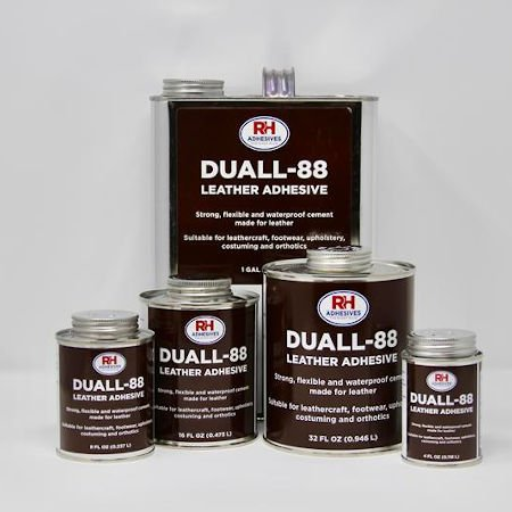
- Contact Cement
Contact cement can be applied in construction because of its very high adhesive power and holding capabilities on bent surfaces as well as filling porous surfaces. It may be used for adhering two dissimilar materials especially where compressed bending forces need not be exceeded.
- PVA Glue (Polyvinyl Acetate)
Polyvinyl acetate glue better known as wood glue can be successfully used to glue leather and wood provided there is some glue clamps applied. It is transparent upon drying and can be used for applications that do not require much strength.
- Epoxy Adhesive
Epoxy makes an incredibly strong bond between the leather and the wood which is also very long lasting. Its bonding abilities are better described by, resistance to moisture, heat and aggressive chemicals, hence used for more detailed work.
- Super Glue (Cyanoacrylate)
Cyano-acrylate adhesives may also be used for small short-term repairs or detail applications. While its chemistry allows for bonds to be formed extremely quickly, it is also stiff making it unsuitable for use in situations where bending or movement is present.
All glues have their advantages for specific tasks in specific circumstances therefore always make sure you select the best one for the materials or application you are going to work on. For that reason care must be taken to follow the particular manufacturer’s instructions at all times.
Contact Adhesive: A Flexible Solution
Contact adhesive is a popular adhesive fixation option, especially useful in all Important areas where maximum bond flexibility and bond strength are concerns. The adhesive is quite sticky, such that once partially cured layers are placed together and pressure is applied, it bonds to itself permanently. It is excellent for applications on rubber, leather, plastics, laminates, and films, and sew metals being a must-have in industries such as those that require adhesives for Bonding and Upholstery in buildings. Unlike other adhesives used in bonding situations, contact adhesive requires no additional clamps and as soon as the surfaces are in place, it can withstand the load; hence, there is so much simplification for the assembly process. Changes in recipe have, in addition, led to it being better resistant to coarse temperatures, water, and also prolonged use in very arduous environments. Contact adhesives should always be used in an enclosed space, properly ventilated, to avoid any exposure to the used solvent.
Epoxy: High-Strength Bonding
Epoxy resins form very strong bonds that are resistant to chemical attacks and other stresses and hence are very popular in many different areas. When used as an adhesive, in this case hardener is mixed with epoxide resin and this mixture gives rise to a bond that can withstand great loads, impact, pressure and aggressive environments. This makes it very efficient for industries, vehicles and construction where environmental conditions are very harsh. It is possible to bond with epoxies a number of materials, including but not limited to metallic alloys, plastic, composites, polycarbonates, and ceramics, with partial bond for any position, including linear, central, or edge.
There has been a significant enhancement in the properties and application of recent epoxies, making it possible to develop some that can cure faster and be used in an assembly line effectively, as well as for complex repair works. The cold and heat resistance values still remain impressive, with some thermal-driven grades reaching 121°C (250°F) or more for specific applications. Epoxy adhesives may also be used as a great gap-filler, facilitating the bonding of materials, even those at uncertain or irregular surfaces. Adhesion and optimal performance improvement can be achieved through various approaches concerning improved cleaning, degreasing, and other methods, preparation for mechanical or biological adhesion. Whether for the recovery phase or for puttying operations with access loads, epoxy is an irreplaceable resource in the building trade for the high performance and authentic acquisition of good quality and enduring cohesive strength.
Comparison of Popular Glue Brands
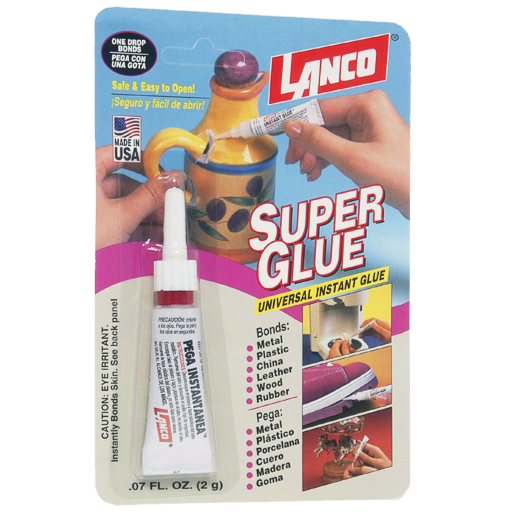
In comparing the adhesive parameters of various conventional glue brands, some of the top performers that catch the eye are:
- Gorilla Glue: It is strong and has a long-lasting and waterproof adhesive. This has a great appeal to studio artists of both clay work and customary-modern construction and art is made easier as user comes to terms with the best deflections for the best boding material. Outdoor projects can be made because of Loctite’s water resistant feature.
- Loctite: Loctite, also called instantaneous adhesive, is used in areas requiring absolutely no correction and plays a part in the many types of super glues and catalyzed curing. Small surface bond fixes without the fuss and errors are a few of Loctite’s many strengths.
- Elmer’s: Elmer’s is another one for harsh and productive uses as it offers products for glueing in the sphere of amateur handcraft, school tasks and, less, in carpentry. It is absolutely safe and not irritable even for children and artisans and hobbyists as well.
- 3M Adhesives: Commercial and industrial 3M adhesives are considered to be of the topmost quality coming out on the market in the present times, and they are used in structural bonding, vehicle repair, construction and adequately surpassing such risings.
Enormous selection different types of such glue. Every one of them has their strengths, some help with simple craft, others are good to heavy duty repairs. The best glue is determined by the type of adhered substance.
Gorilla Glue: Features and Performance
The Gorilla Glue product line is designed with emphasis on both durability and flexibility, thus making it an excellent choice for multiple purposes. This strength is characterized by the particular formula of Gorilla Glue which expands when it comes into contact with a material that it is meant to bond, thus forming a really hard structure. This bonding retention capability is particularly effective on wrase and key rope fl; wood, metal, clay, ceramics, glass, and more, porous and non-porous substrates will have a solution.
One favorable aspect of Gorilla Glue is that it is water proof since it satisfies the requirements of water resistance Type I as set by the ANSI/HPVA. It is therefore within specifications for outdoor and water borne installations, areas where one expects such losses due to environmental factors. It is also suitable for use in high and low temperatures, in -40° and 240°F conditions the glue preserves its strength.
Concerning augmented concern, different studies have also found Gorilla Glue useful in providing high tensile strength that can withstand high tensile stress without yielding. Users should be aware that the adhesive demands adequate clamping forces for proper bonding, and swelling occurs during curing, which often demands precise product application to avoid post-slopping of the glue. First bond strength is usually achieved within 1-2 hours and it takes 24 hours for the full cure.
Best Adhesives for Furniture Repair
|
Adhesive Name |
Key Points |
Recommended Uses |
Drying Time |
Strength |
|---|---|---|---|---|
|
Gorilla Wood Glue |
Strong bond for wood |
Wooden furniture joints |
20-30 minutes |
High |
|
Titebond III Ultimate |
Waterproof and durable |
Outdoor and indoor wood projects |
10-15 minutes |
Superior |
|
Elmer’s Carpenter’s Glue |
Great for carpentry works |
Indoor furniture repairs |
20-30 minutes |
Moderate |
|
Loctite Epoxy |
Bonds wood, metal, and more |
Multi-material furniture fractures |
5-10 minutes |
Very high |
|
J-B Weld Wood Weld |
Strong structural bonding formula |
Heavy wood furniture repairs |
Over 1 hour |
Exceptional |
|
PVA Glue |
Easy to use, non-toxic |
Light-duty wood furniture |
20-30 minutes |
Moderate |
|
Super Glue Gel |
Quick and precise application |
Small furniture touch-ups |
Seconds |
High |
Application Techniques for Glue
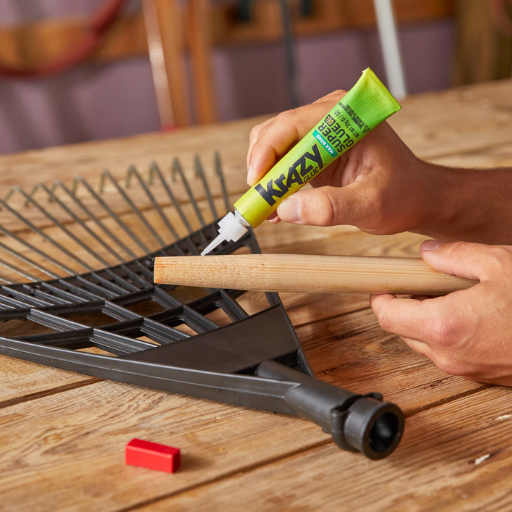
- Surface Preparation
The user should always ensure that both surfaces are clean, dry, and without any dust, oils or other contaminating agents that might act as barrier between the surfaces. In some glues, especially when working on wood or smooth surfaces, the use of fine sandpaper may enhance adhesion to the materials.
- Glue Application
You should use the glue in an even layer on to either side as per the product instructions. Use a brush, nozzle, or applicator for accuracy of the liquid or gel glue if any.
- Pressing and Clamping
Join the accurate surfaces and place a pressure to that surfaces. If the adhesives are stronger, it would be necessary to use clamps such as those made w epoxy glue or wooden type of adhesive so that a strong connection will be created during the hardening period.
- Curing Time
The user should allow enough curing time as specified on the label of the product. During this time, the user should be conscious in terms of abrasing the liquid joint in some way, because it diminishes bond.
By learning the above principles, the procedure to carry out in adhesive application can be optimized. Always, always read and follow the recommendations provided, because some of the requirements can differ depending on the adhesive and its material.
Surface Preparation: Ensuring a Strong Bond
Prior to assembling the pieces, process the surfaces on which the adhesive will be applied. The first activity is to clean the surfaces sufficiently by removing any dust, moisture, oils, or adhesives that may still be remaining. Some of these problems, including solvent-based adhesives, tend to result in the adhesive getting too thick and as a result, they do not form a strong bond. No more than a fine thin dust patina. Leave on only a layer that can be removed first, used on a cloth, and slightly damp, and if possible, remove any dirt on the substrate.
For metallic substances and plastics that are non-porous, there needs to be some degree of roughening of the surface using a micro-abrasive pad or fine-grained sandpaper. This will make a larger surface area available for adhesion and a better mechanical lock between the substrate and the adhesive. And when using absorbent materials such as wood, ensure that there are no loose fibers still standing and that the surface is indeed smooth yet able to absorb the unit.
Drying Times and Setting Methods
There are various types of adhesives and the setting time of an adhesive depends on its type as well as on the environmental conditions where the adhesive is used. Most epoxy-based adhesives will have a curing time of 30 minutes to 24 hours, depending on the mix ratio of the solution. Other maintenance, which is a little bit slower in action, however, are essentially quick-setting. These are the so-called super glues; some take seconds, but generally take up to a day for maximum strength. Moisture-curable polyurethane adhesives require moisture to cure and achieve handling strength within 4 to 8 hours of application, though full cure may take up to 24 hours.
Care and Maintenance for Glued Items
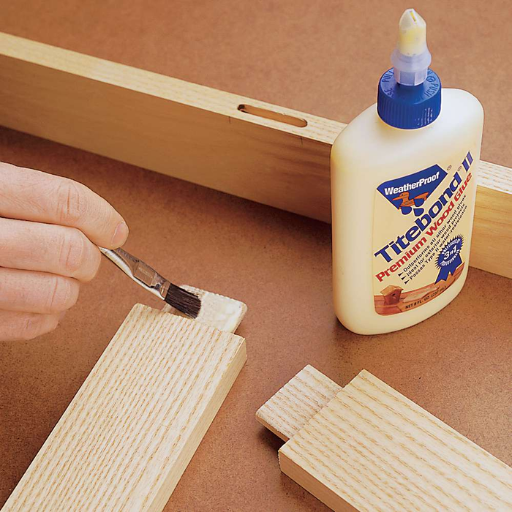
Longevity and durability of bonded products can be enhanced by keeping their pieces in good condition as well as storing them until further use. Cleaning the bonded areas is warranted; this can be done by wiping them off with a clean, wet cloth containing no dust or particles and without damaging the adhesive bond. Also, exposure to high temperatures and levels of humidity should be avoided because this might weaken the adhesive. Any bonded items are to be kept in a place where the temperature is controlled and the moisture levels are limited. Every once in a while, one should check the bonds to see if they have any weaknesses or wear and apply adhesive near the parts that require attention if needed, the way it is recommended by the manufacturer, so as to ensure the general security of delicate matters held together.
Cleaning Methods for Longevity
To keep surfaces and items durable, it stands out that the right cleaning processes have to be used in the presence of continued improvement. For the sensitive surfaces, one would go for pH-neutral cleaning agents as they eradicate any risk for chemical corrosion and color change with the materials. In the case of more considerable amassment of soiling, or rather, heavy soiling, it is solved by the use of solvents, specifically isopropanol in suitable concentrations, but a test is first performed on a portion lest it cause harm. For mechanical cleaning equipment, use brushes with soft bristles or microfiber cloths for some clean-up as natural abrasion and the surface work wonders.
Further to that, cerebral methods like cleaning in a circle, stretching outward, can help alleviate unevenly distributed pressure and hence minimize streaking, especially in instances where we are dealing with cleaning glazing or other reflecting surfaces. It is also advisable to clean such tools as brushes dirtied during the process and fabrics, as retained soil can compromise and even result in a transfer of the soil due to scratching. Focusing on dry conditions after cleaning and storing the items in a place that has no significant fluctuation in temperature and is not excessively humid will aid in preventing the growth of mold and other similar pathogens and enhance the life of the object.
Environmental Factors to Avoid
- High Humidity Levels
In countries with high levels of humidity, microbes and fungi grow very quickly, and it can even create problems when it comes to original materials such as wood, paper or fabrics. In most cases, it is highly risky for organic compounds and other materials since the relative humidity ought to be between 30% and 50% and when it is 60% and above, it is worse as it enhances the absorption of biological materials in the surfaces.
- Direct Sunlight or UV Exposure
Such incidents as staying under the sun, and being affected by harmful ultraviolet rays, can cause bleaching, discoloration, and material changes of materials like plastics, clothing and paintings in general. It’s prohibitive to place material which could be influenced by light in areas such as door and window, cracks, and other casements that can be closed off.
- Extreme Temperatures
Seasonal and very high temperatures and very low temperatures can negate the factors of the nonreactive surfaces by altering them through expansion and contraction, thus either causing caverns to stretch, deformation, or brittleness of the materials. Thermal equilibrium is also crucial as this minimizes the stress on the materials that can be caused due to thermal expansions through maintaining the temperature within the ranges of 65°F – 75°F.
- Dust and Airborne Particulates
Dust and dirt also can cause wear and tear on mechanical parts and can surface into the system clogging up the components or the surfaces. Every available measure should also be taken in reducing the damage that may be brought about by dust particles by introducing air cleaning measures and sanctifying the environment time and again.
- Chemical Contaminants
Reference Sources
-
Additive Manufacturing: Is it a New Era for Furniture Production?: This study explores the role of additive manufacturing in furniture production, emphasizing the potential to create furniture without traditional adhesives like glue. It highlights the environmental and design benefits of using wood-based or derived materials in 3D printing. Read the study
-
Increasing the Economy of Village Community Through Banana Waste Management: This paper discusses innovative uses of banana waste, including coating materials with wood glue or lacquer to enhance durability. It emphasizes the economic and environmental benefits of utilizing agricultural waste. Read the study
-
The Mechanical Behavior of Library and Archive Materials: This paper investigates the mechanical properties of materials like leather, vellum, and adhesives (e.g., collagen glues) used in library and archival contexts. It highlights the hygroexpansivity and durability of these materials. Read the study
Frequently Asked Questions (FAQs)
Q: What is the best way to use glue for leather to wood?
A: The best way to use glue for leather to wood involves selecting the right adhesive for your project. For a strong bond, consider using a heavy-duty adhesive for leather that can withstand stress and movement. Ensure the surfaces are clean and dry before applying the glue. Spread the adhesive evenly across the entire surface for a good bond, and consider using a nozzle applicator for precision. Allow time for the glue to cure fully, which can vary depending on the formula used. For added strength, applying two coats of glue may enhance durability.
Q: Can I use super glue for attaching leather to wood?
A: Yes, super glue can be effective for attaching leather to wood, especially when you need a super fast setting time. However, it’s important to note that while superglue dries quickly, it may not provide the flexibility needed for certain applications like shoes or handbags. For more robust projects, consider using wood glue or a specialized adhesive for leather that offers a good bond without compromising flexibility. When using super glue, ensure the surfaces are clean and press them firmly for optimal adhesion.
Q: What is the best way to glue suede to wood?
A: The best way to glue suede to wood is to use a strong adhesive specifically designed for leather, such as a rubber adhesive or a spray adhesive. These types of glue provide excellent bonding capabilities while maintaining the flexibility of the suede. Before applying the adhesive, clean both surfaces to remove any dust or debris. Apply the adhesive evenly, ensuring complete coverage, and use a vise to hold the pieces together while the glue cures. This method will help achieve a durable bond that lasts over time.
Q: How do I choose the right wood glue for my project?
A: Choosing the right wood glue for your project depends on the materials and conditions of use. For general woodworking, PVA wood glue works well and dries clear, making it ideal for projects that require a neat finish. If you are working with leather, consider an adhesive for leather that provides a flexible bond. For outdoor projects or where a heavy-duty bond is needed, epoxy or polyurethane glues are excellent options. Always check the manufacturer’s recommendations for compatibility with the materials you’re using.
Q: Can I use tape as an alternative to glue for leather and wood?
A: Using tape as an alternative to glue for leather and wood can be effective in certain situations, especially for temporary holds or lightweight projects. Double-sided tape or fabric tape can provide a good bond for attaching leather to wood without the mess of traditional adhesives. However, it’s important to note that tape may not provide the same strength or durability as a specialized adhesive. For projects that require a permanent bond, it’s still best to use a dedicated glue for leather and wood applications.



















